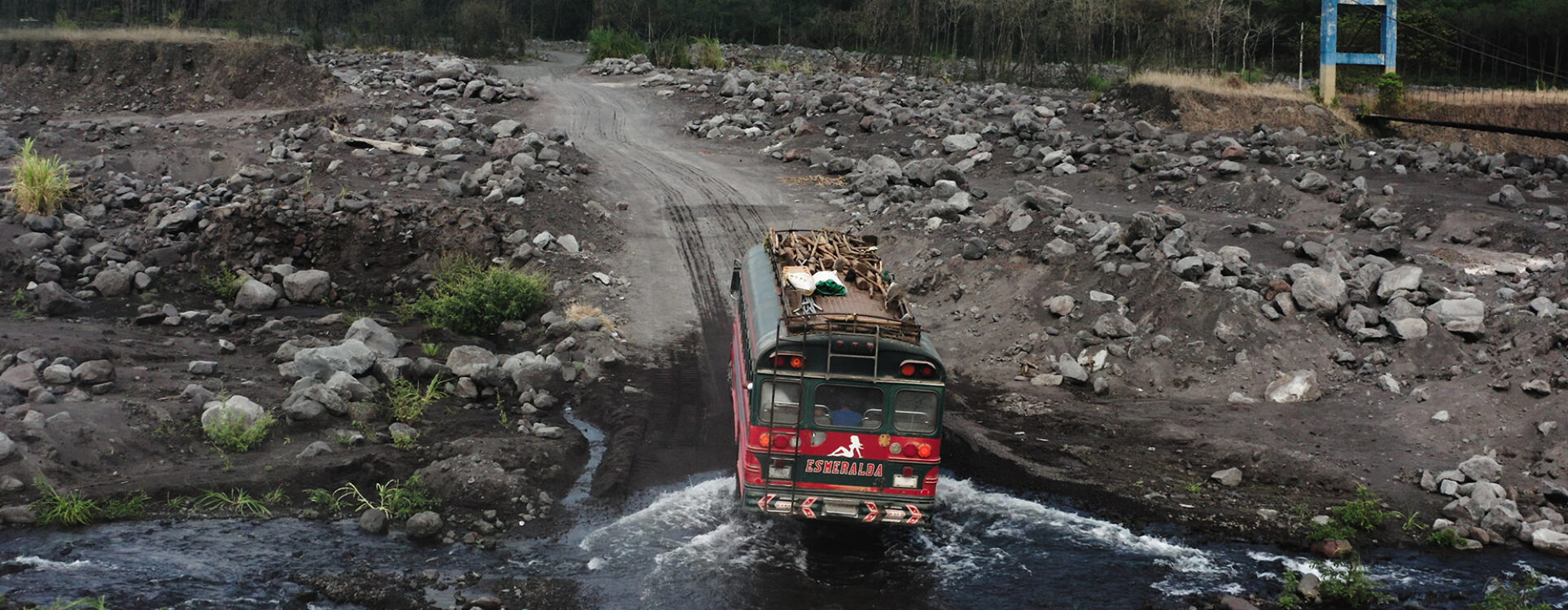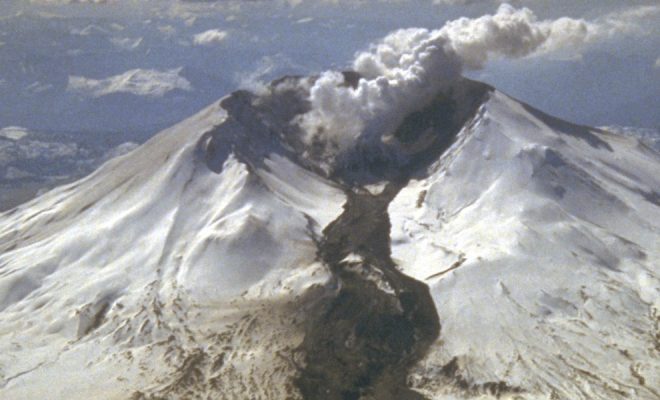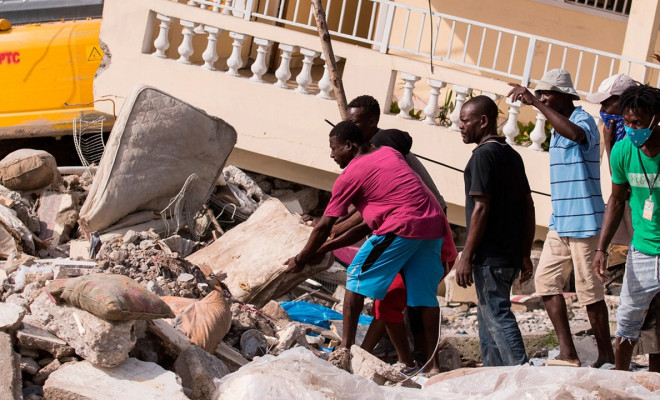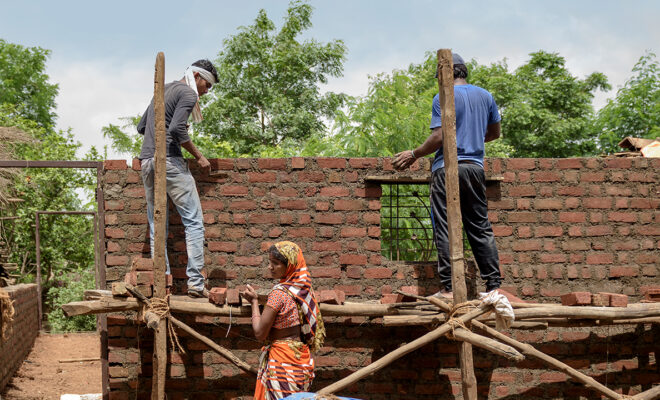On June 3rd, 2018, the earth shook at the foot of Guatemala’s Fuego Volcano. It was the most violent eruption since 1974. A blazing flow raced downhill, destroying everything in its path. More than 60 people lost their lives, hundreds of homes were burned, and the water system fed by the Ceniza River was wiped out. For weeks, thousands of people in Siquinalá and surrounding communities were left without access to safe water.
This micro-documentary is not just about the tragedy; it tells the story of the reconstruction we carried out in collaboration with World Vision, bringing water back to the communities in the river basin and benefiting over 11,700 people. A story of resilience in the face of one of the most devastating and least known natural phenomena: lahars.

A story of the lessons left by destruction, and how new hydraulic engineering can reduce the vulnerability of those most exposed to natural disasters.
When the Water Disappears with the Volcano
“How do we escape? Where do we go?” recall the people of Siquinalá. The first wave of destruction came with the pyroclastic flows: a lethal mix of gases and volcanic materials over 600 ºC that travelled at over 100 km/h. Shortly after came the lahars—mudslides of ash and rocks triggered by rainfall, sweeping away bridges, roads, crops, and hydraulic infrastructure.
The Ceniza River water system was rendered useless. Lahars destroyed the pipelines and contaminated any surface water sources. As always happens during natural disasters, water disappeared just when it was needed the most.

The Ceniza River water system was rendered useless. Lahars destroyed the pipelines and contaminated any surface water sources.
Pyroclastic Flows and Lahars: Two Destroyers on Different Timelines
Pyroclastic flows are extraordinarily destructive, capable of overcoming obstacles and either incinerating or burying entire areas under a blanket of debris. According to the United States Geological Survey (USGS), pyroclastic flows have caused approximately 120,000 deaths worldwide over the past 500 years, over 30,000 of those in the 20th century alone.
These “rains of fire” have become cultural icons of the Apocalypse, especially since the 19th-century excavations in Pompeii uncovered the cavities left by human bodies in tragic defensive postures beneath layers of ash. Around 5,000 people are believed to have died within minutes during the eruption of Mount Vesuvius on August 24th, 79 AD—likely the oldest documented volcanic eruption in history.
Lahars tend to appear a bit later. They can reach speeds of up to 200 km/h on steep slopes and are as destructive as avalanches or flash floods, but with the added damage caused by the abrasive volcanic material they carry.
Lahars have been responsible for some of the deadliest natural disasters of the 20th century, such as the Armero tragedy in Colombia in 1985, which claimed over 20,000 lives. In Guatemala, the Fuego Volcano remains active and continues to pose a constant threat.
Rebuilding Water. Rebuilding Life
The documentary explains how pyroclastic flows caused most of the fatalities, while lahars destroyed the infrastructure, whose reconstruction was the central focus of our project. The intervention was structured around three main pillars:
- Reconstruction of the water system, with a new underground pipeline more resistant to future eruptions.
- Installation of rainwater harvesting systems, using reinforced concrete tanks designed to withstand lahars.
- Technical and community training to ensure autonomous and effective maintenance.
In the documentary, you’ll see the new tanks, handwashing stations, wash areas, and sanitation facilities where water now flows again. Rainwater is safely stored, protected from ash, and distributed to homes and fields.

In the documentary you can see the new tanks, sinks, wash basins and sanitation facilities through which the water is now flowing again.
Don Juanito, the Water Keeper
Every three and a half hours, Don Juanito opens the valves of the tanks located high on the volcanic slope. He has done so for four years, with meticulous precision. “It’s a twelve-hour job. But it must be done—no one can live without blessed water,” he says. He knows exactly how the system works—the same one he helped build along with other members of his community.
Don Juanito is one of the Siquinalá residents whom we trained, along with World Vision and Guatemalan authorities, to manage and maintain the system. The training went further: we deepened their knowledge of hydrological and climate-related issues and taught emergency protocols to ensure families could continue receiving water during crises.
He stands as proof of what communities can achieve when they are given the tools to rebuild with resilience and prepare for future emergencies.

Every three and a half hours, Don Juanito opens the valves of the tanks high up on the slope of the volcano. He has been doing it for four years, with meticulous precision.
An Experience that Multiplies
The intervention in Siquinalá is part of our broader commitment to supporting communities affected by natural disasters. To date, we have implemented nine such projects, helping over 71,000 people regain access to water, sanitation, and hygiene following eruptions, earthquakes, or floods in countries such as Turkey, Indonesia, Mozambique, Zimbabwe, the Philippines, and Nepal.
The documentary is a powerful testament to what can be achieved when water access becomes a priority after disaster strikes. Because when a volcano destroys the water, it destroys life itself. But where water returns, hope is reborn.
We invite you to subscribe to our YouTube channel.





